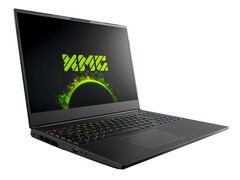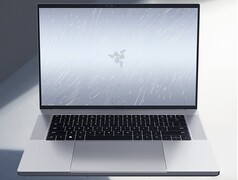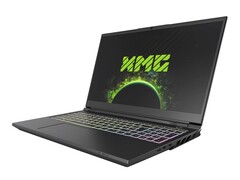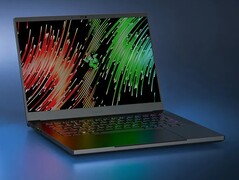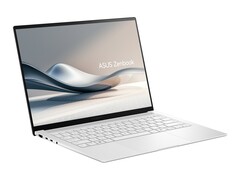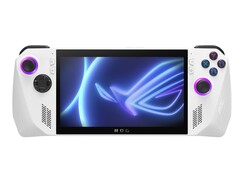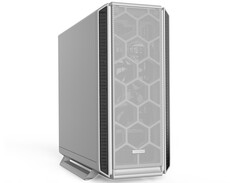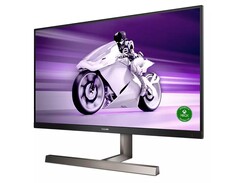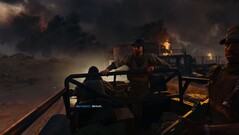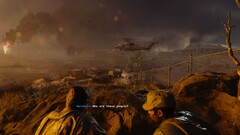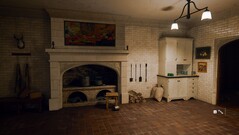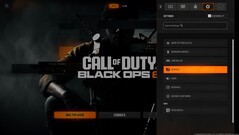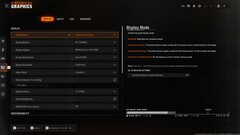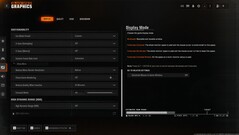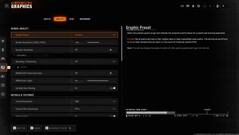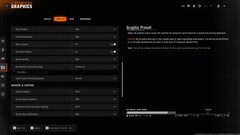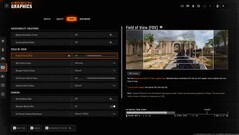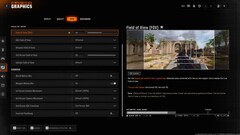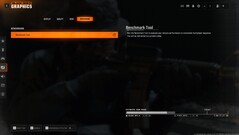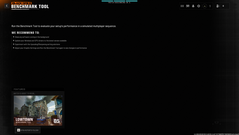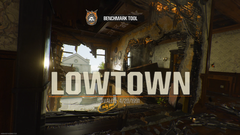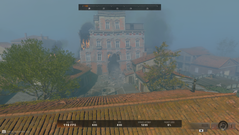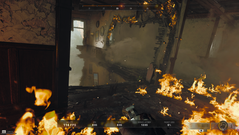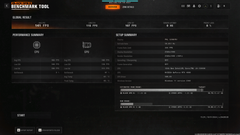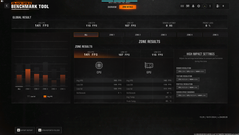Black Ops 6 tech test with benchmarks: Light and shade in the new Call of Duty
Test systems
We currently carry out our gaming benchmarks with these devices. Clicking on the photos will take you to the respective manufacturer's website. More details on the specifications are listed at the end of the article.
Tech
Every year, Call of Duty fans are provided with new versions from various developers. Treyarch and Raven Software were mainly responsible for Black Ops 6. From a rating perspective, the latest installment in the series is performing much better than its predecessor, which we also subjected to a benchmark check back in 2023. Graphically, players are offered decent to sometimes good fare, although there is often still room for improvement. Even at the maximum quality level, some textures and effects are only partially impressive. In this respect, more should be possible in 2024, especially as the game will set you back a steep 70 dollars on Steam.
Meanwhile, tuning fans can look forward to super extensive graphics options extending across several submenus due to the sheer volume. Starting with the display tab, in which you can change classics such as resolution, aspect ratio, frame rate and many other settings (including an optional FPS limit). The quality menu is particularly full. There are almost 30 controls, which sometimes have more and sometimes less influence on performance and image display. A VRAM display helps to assess the effects. We also like that there are text explanations and, in some cases, comparison images for the individual settings.
Handy: Almost all adjustments are applied without needing to restart the game and there are several presets to change most settings in one go. As befits a modern game, Black Ops 6 supports various upscaling modes, including DLSS, FSR and XeSS. However, at this point in time (as of November 1, 2024), these don't run the smoothest, as we will show in a moment using the benchmarks. In general, the upscaling setting still seems to be buggy at the moment. If you activate DLSS and leave the menu, the game automatically switches to FidelityFX CAS, unless you set the sharpening option to 0 instead of 50.
Another major issue in our eyes is the poor user experience, especially at the first launch or launches. This was already the case upon the release of its predecessors, but has now become even worse here and there. The game not only requires an Activision account, but it also forces you to add a telephone number for the Steam version. Preloading shaders, which can take several minutes and which came into fashion with Call of Duty, also leads to waiting times. We are generally not a big fan of the overarching Call of Duty app, as game or mode changes often force you to restart.
Benchmark
The integrated benchmark, whose presence is generally praiseworthy, also caused us to scratch our heads, as it is available directly in the graphics menu this time—but only if you are currently in multiplayer mode. Apart from this, the benchmark cuts a good figure. After a short camera movement, the view switches to the first-person perspective and several action-packed and graphics-intensive scenes with fire and explosions etc are played.
As you can see in the video below, the entire sequence lasts just under 50 seconds. At the end, a very detailed evaluation is displayed including CPU, GPU and VRAM utilization as well as the performance in several zones. As this is a (multiplayer) game with a fast speed, the average should be at least 40fps or even better 60fps.
Results
FHD (1,920 x 1,080)
The graphics requirements are fairly moderate for a first-person shooter, which suggests it has been optimized well. For example, the Radeon 780M iGPU, which is very popular with entry-level laptops and handhelds, can handle medium settings (Balanced preset) in Full HD quite well. With the Intel Arc Graphics 140V, on the other hand, it tends to be enough—if at all—for the Minimum preset.
| Call of Duty Black Ops 6 | |
| 1920x1080 Basic Preset 1920x1080 Balance Preset 1920x1080 Ultra Preset 1920x1080 Extreme Preset | |
| NVIDIA GeForce RTX 4080, i9-13900K | |
| AMD Radeon RX 7900 XT, i9-13900K | |
| NVIDIA GeForce RTX 4090 Laptop GPU, i9-13900HX | |
| NVIDIA GeForce RTX 4080 Laptop GPU, i9-13950HX | |
| NVIDIA GeForce RTX 4070 Laptop GPU, i9-13900HX | |
| NVIDIA GeForce RTX 4060 Laptop GPU, R9 7940HS | |
| NVIDIA GeForce RTX 4050 Laptop GPU, i7-13700H | |
| AMD Radeon 780M, Z1 Extreme | |
| Intel Arc Graphics 140V, Core Ultra 7 258V | |
QHD (2,560 x 1,440)
If a current mid-range GPU is under the hood of your computer, you will be well equipped for QHD. Starting with a mobile GeForce RTX 4050, 2,560 x 1,440 pixels and maximum settings can already be selected.
| Call of Duty Black Ops 6 | |
| 2560x1440 Extreme Preset 2560x1440 Extreme Preset + DLSS Quality 2560x1440 Extreme Preset + FSR1 Quality | |
| AMD Radeon RX 7900 XT, i9-13900K | |
| NVIDIA GeForce RTX 4080, i9-13900K | |
| NVIDIA GeForce RTX 4090 Laptop GPU, i9-13900HX | |
| NVIDIA GeForce RTX 4080 Laptop GPU, i9-13950HX | |
| NVIDIA GeForce RTX 4070 Laptop GPU, i9-13900HX | |
| NVIDIA GeForce RTX 4060 Laptop GPU, R9 7940HS | |
| NVIDIA GeForce RTX 4050 Laptop GPU, i7-13700H | |
UHD (3,840 x 2,160)
You don't need to have access to an absolute top model when playing on 4K displays, either. 3,840 x 2160 pixels and the Extreme preset are properly conjured up on the screen with the help of a laptop GeForce RTX 4070 or higher. Unfortunately, upscaling is not yet fully mature. When activating DLSS or FSR Quality, the performance in UHD is sometimes barely better or even worse. The developers definitely need to work on this.
| Call of Duty Black Ops 6 | |
| 3840x2160 Extreme Preset 3840x2160 Extreme Preset + DLSS Quality 3840x2160 Extreme Preset + FSR Quality | |
| AMD Radeon RX 7900 XT, i9-13900K | |
| NVIDIA GeForce RTX 4080, i9-13900K | |
| NVIDIA GeForce RTX 4090 Laptop GPU, i9-13900HX | |
| NVIDIA GeForce RTX 4080 Laptop GPU, i9-13950HX | |
| NVIDIA GeForce RTX 4070 Laptop GPU, i9-13900HX | |
| NVIDIA GeForce RTX 4060 Laptop GPU, R9 7940HS | |
| NVIDIA GeForce RTX 4050 Laptop GPU, i7-13700H | |
Overview
Test system details
| Mobile | Graphics card | Processor | RAM |
|---|---|---|---|
| XMG Neo 16 E23 | Nvidia GeForce RTX 4090 @175 W TGP (16 GB GDDR6X) | Intel Core i9-13900HX | 2 x 16 GB DDR5 |
| Razer Blade 16 Mid 23 | Nvidia GeForce RTX 4080 @175 W TGP (12 GB GDDR6X) | Intel Core i9-13950HX | 2 x 16 GB DDR5 |
| XMG Pro 15 E23 | Nvidia GeForce RTX 4070 @140 W TGP (8 GB GDDR6) | Intel Core i9-13900HX | 2 x 16 GB DDR5 |
| Razer Blade 14 Mid 23 | Nvidia GeForce RTX 4060 @140 W TGP (8 GB GDDR6) | AMD Ryzen 9 7940HS | 2 x 8 GB DDR5 |
| Medion Erazer Scout E20 | Nvidia GeForce RTX 4050 @100 W TGP (6 GB GDDR6) | Intel Core i7-13700H | 2 x 8 GB DDR5 |
| Asus Zenbook S 14 | Intel Arc Graphics 140V | Intel Core Ultra 7 258V | 32 GB LPDDR5-8533 |
| Asus ROG Ally Z1 Extreme | AMD Radeon 780M | AMD Ryzen Z1 Extreme | 16 GB LPDDR5-6400 |
| Tower PC | Graphics card | Processor | RAM |
|---|---|---|---|
| Asus ROG Strix Z790-F | Nvidia GeForce RTX 4080 (16 GB GDDR6X) AMD Radeon RX 7900 XT (20 GB GDDR6) |
Intel Core i9-13900K | 2 x 24 GB DDR5 G.Skill |
| 4K monitor | Operating system | Nvidia driver | AMD driver | Intel driver |
|---|---|---|---|---|
| Philips Evnia 329M1RV | Windows 11 | 566.03 | 24.10.1 | 101.6044 |





